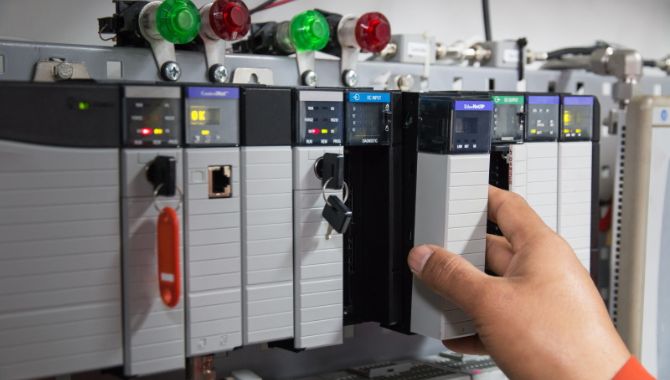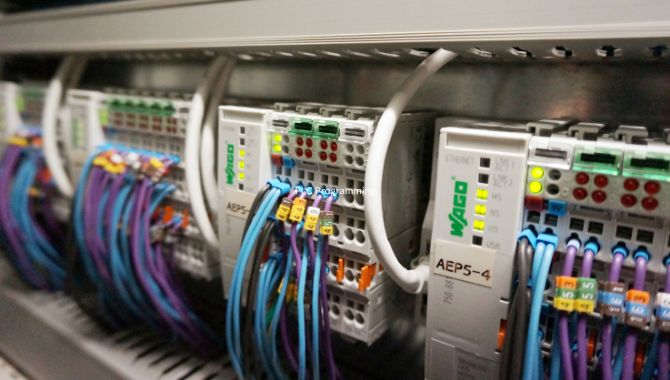In the modern industrial landscape, efficiency, reliability, and seamless control are paramount. Programmable Logic Controllers (PLCs) and Supervisory Control and Data Acquisition (SCADA) systems are two cornerstones of industrial automation. Integrating these systems can significantly enhance operational efficiency, real-time monitoring, and control over complex industrial processes. This comprehensive guide will explore the integration of PLCs with SCADA systems, covering the benefits, methods, and best practices for a successful implementation.
What Are PLCs and SCADA Systems?
PLCs (Programmable Logic Controllers): These are industrial computers designed to control manufacturing processes or robotic devices. They are highly reliable, can operate under harsh industrial environments, and are programmed using languages like Ladder Logic, Function Block Diagram, or Structured Text.
SCADA (Supervisory Control and Data Acquisition) Systems: SCADA is a control system architecture that uses computers, networked data communications, and graphical user interfaces for high-level process supervisory management. It also utilizes other peripheral devices like PLCs and discrete PID controllers to interface with the process plant or machinery.
Benefits of Integrating PLCs with SCADA Systems
- Enhanced Monitoring and Control: SCADA systems provide a centralized view of the entire process, enabling real-time monitoring and control. Integration with PLCs allows operators to make informed decisions quickly.
- Data Collection and Analysis: Integrated systems can collect vast amounts of data from PLCs, which can be analyzed to improve process efficiency, predict maintenance needs, and enhance overall productivity.
- Improved Reliability and Safety: The integration ensures robust control over processes, improving reliability and operational safety. SCADA systems can provide alerts and alarms based on data from PLCs, allowing for prompt corrective actions.
- Cost Efficiency: Centralized monitoring and control reduce the need for manual interventions and minimize downtime, leading to significant cost savings.
- Scalability: Integrated PLC-SCADA systems can be easily scaled to accommodate growing industrial operations, making them ideal for expanding businesses.
Methods of Integrating PLCs with SCADA Systems
Direct Communication:
- Ethernet/IP: One of the most common methods for PLC-SCADA integration. Ethernet/IP allows for fast and reliable communication, ideal for real-time control and monitoring.
- Modbus TCP/IP: Another widely used protocol for integrating PLCs with SCADA systems. It is simple to implement and provides robust communication.
Using OPC (OLE for Process Control):
- OPC servers act as intermediaries between PLCs and SCADA systems, facilitating data exchange. OPC DA (Data Access) and OPC UA (Unified Architecture) are common standards used.
Serial Communication:
- RS-232/RS-485: These serial communication protocols can be used for PLC-SCADA integration, especially in legacy systems where Ethernet is not available.
Proprietary Protocols:
- Some manufacturers offer proprietary protocols for seamless integration between their PLCs and SCADA systems. While these can provide enhanced features, they may limit interoperability with third-party devices.
Best Practices for Integrating PLCs with SCADA Systems
Define Clear Objectives:
- Understand the specific needs and goals of the integration project. Define clear objectives to ensure the integration meets operational requirements.
Choose the Right Protocols:
- Select communication protocols that best suit your industrial environment and operational needs. Consider factors such as data transfer speed, reliability, and ease of implementation.
Ensure Compatibility:
- Verify that the PLCs and SCADA systems are compatible with each other. This includes checking software versions, supported protocols, and hardware interfaces.
Plan for Scalability:
- Design the integrated system with future expansion in mind. Ensure that the system can accommodate additional devices and increase data flow without significant reconfiguration.
Implement Robust Security Measures:
- Protect the integrated system from cyber threats by implementing robust security measures such as firewalls, encryption, and regular security updates.
Conduct Thorough Testing:
- Before going live, conduct extensive testing to ensure that the integrated system performs as expected—test for data accuracy, communication reliability, and system responsiveness.
Provide Training and Support:
- Ensure that operators and maintenance personnel are adequately trained on the integrated system. Provide ongoing support to address any issues that may arise.
Conclusion
Integrating PLCs with SCADA systems offers numerous benefits, including enhanced monitoring, improved reliability, and cost efficiency. By following the right methods and best practices, industries can achieve seamless integration and reap the rewards of a highly efficient and scalable control system. For industries looking to leverage advanced automation solutions, Swastika offers expert services in PLC programming and SCADA integration, ensuring your operations run smoothly and efficiently.
Integrate your PLCs with SCADA systems today and transform your industrial automation processes with the expertise and reliability of Swastika. Contact us for tailored solutions that meet your unique operational needs.


